
Featherston camp in 1916 (courtesy Wairarapa Archive)
The Featherston Military Training Camp included 16 dining halls, six cook houses, 17 shops, a canteen, several picture theatres, three billiard rooms, a large hospital compound and a post office. Along with Trentham Camp just over the Rimutaka hill, Featherston Camp trained a third of all NZ soldiers who served in World War One.
Embarrassed by an epidemic that broke out at the overcrowded Trentham Camp in 1915, the Defence Department gave high priority to the building of the Featherston Camp, including a modern hospital and improved living conditions designed to avoid Trentham Camp’s health problems.
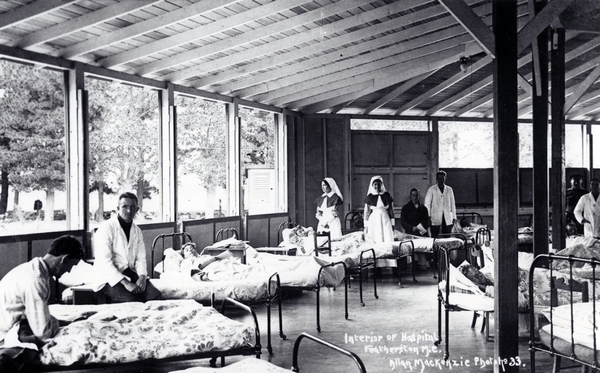
Hospital ward. The hospital was octagonal in design and the large windows swung outwards to provide fresh air for men with respiratory diseases which were common. (courtesy Wairarapa Archive)
Initially housing 6,500 men and 500 horses, Featherston Camp was expanded in 1917 to accommodate 8,000 men.
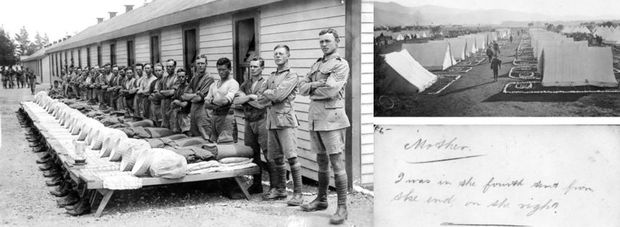
Bedding inspection. Trainee tells his mother that he was in the fourth tent from the end on the right. (courtesy Wairarapa Archive)
From 1916 to 1918 the camp trained 60,000 soldiers, they slept in wooden huts divided into two 24-man sleeping compartments and each man had a wooden stretcher lined with a straw-stuffed mattress. But not all lived in huts, about 2,000 were accommodated in tents.
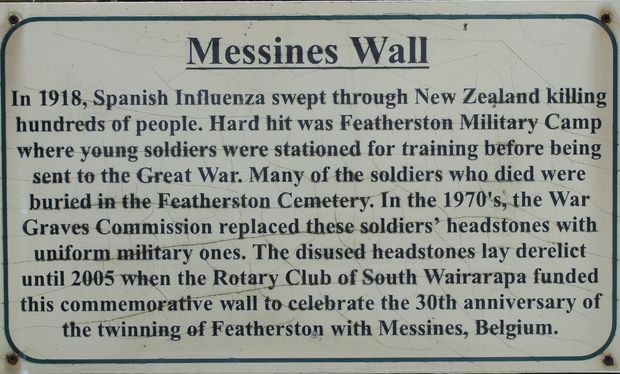
The influenza epidemic struck Featherston Camp in November 1918, over 3,000 were hospitalised and 177 died.
With the war’s end, the camp closed. It was re-commissioned during World War Two to as a prisoner of war camp
for Japanese soldiers.
Today, a few foundations and walls are all that’s left of Featherston Camp.
John Hodder and Derek Hallett show Spectrum’s Jack Perkins around the camp remains and re-create the life and times there.
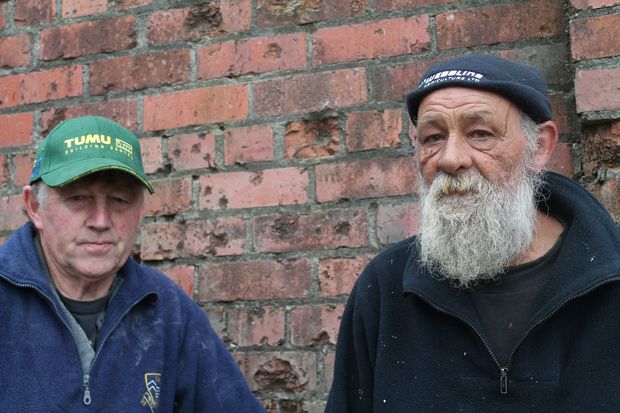
John Hodder (left) and Derek Hallett. The massive brick wall behind the rifle range targets is pockmarked by stray bullets.
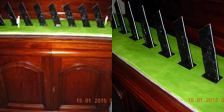
Paul Dibble’s model of his sculpture planned for the centre of Featherston. it's related to his Anzac work in Hyde Park.The columns will be made of bronze, and lit down the edge with LED lighting or floor lighting. They’ll be approx. 12ft tall.

